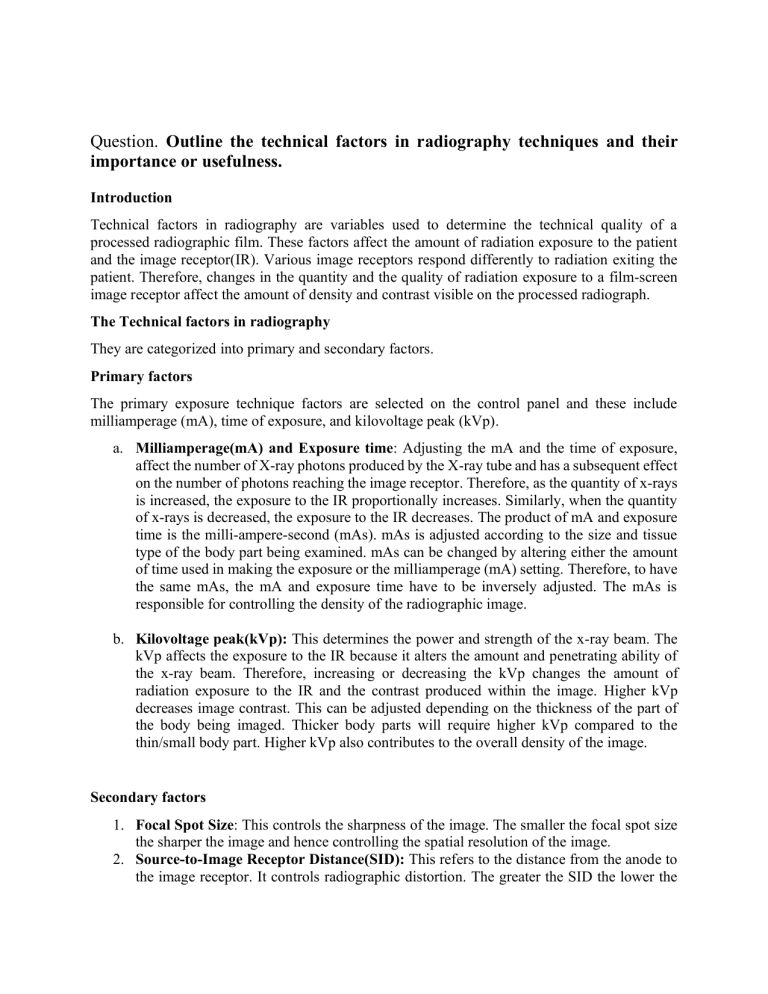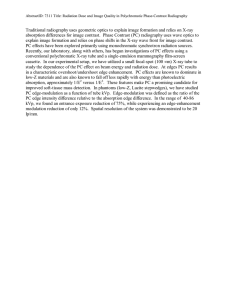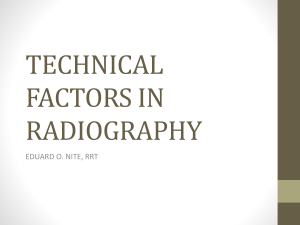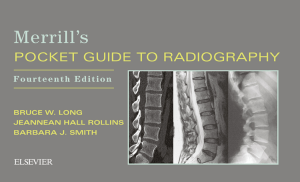
Question. Outline the technical factors in radiography techniques and their importance or usefulness. Introduction Technical factors in radiography are variables used to determine the technical quality of a processed radiographic film. These factors affect the amount of radiation exposure to the patient and the image receptor(IR). Various image receptors respond differently to radiation exiting the patient. Therefore, changes in the quantity and the quality of radiation exposure to a film-screen image receptor affect the amount of density and contrast visible on the processed radiograph. The Technical factors in radiography They are categorized into primary and secondary factors. Primary factors The primary exposure technique factors are selected on the control panel and these include milliamperage (mA), time of exposure, and kilovoltage peak (kVp). a. Milliamperage(mA) and Exposure time: Adjusting the mA and the time of exposure, affect the number of X-ray photons produced by the X-ray tube and has a subsequent effect on the number of photons reaching the image receptor. Therefore, as the quantity of x-rays is increased, the exposure to the IR proportionally increases. Similarly, when the quantity of x-rays is decreased, the exposure to the IR decreases. The product of mA and exposure time is the milli-ampere-second (mAs). mAs is adjusted according to the size and tissue type of the body part being examined. mAs can be changed by altering either the amount of time used in making the exposure or the milliamperage (mA) setting. Therefore, to have the same mAs, the mA and exposure time have to be inversely adjusted. The mAs is responsible for controlling the density of the radiographic image. b. Kilovoltage peak(kVp): This determines the power and strength of the x-ray beam. The kVp affects the exposure to the IR because it alters the amount and penetrating ability of the x-ray beam. Therefore, increasing or decreasing the kVp changes the amount of radiation exposure to the IR and the contrast produced within the image. Higher kVp decreases image contrast. This can be adjusted depending on the thickness of the part of the body being imaged. Thicker body parts will require higher kVp compared to the thin/small body part. Higher kVp also contributes to the overall density of the image. Secondary factors 1. Focal Spot Size: This controls the sharpness of the image. The smaller the focal spot size the sharper the image and hence controlling the spatial resolution of the image. 2. Source-to-Image Receptor Distance(SID): This refers to the distance from the anode to the image receptor. It controls radiographic distortion. The greater the SID the lower the 3. 4. 5. 6. 7. 8. intensity reaching the film. Therefore, to obtain the same film blackening, if the SID is increased the mAs must also be increased. Object-to-Image Receptor Distance(OID): is the distance between the object to the image receptor. This also affects the magnification of the body part on the film. Central Ray Alignment: Improper central ray alignment distorts the radiographic image Grids: They are placed between the patient and the x-ray film to reduce the scattered radiation reaching the image receptor and thus improve image contrast. Collimation: Increasing collimation means decreasing field size, and decreasing collimation means increasing field size. This serves two purposes; limiting patient exposure and reducing the amount of scatter radiation produced within the patient. Filters: These are metal sheets placed in the x-ray beam between the window and the patient that are used to attenuate the low-energy (soft) x-ray photons from the spectrum. They help to reduce scatter and patient dose. Compensating Filters: These are special filters used to limit the primary beam at an anatomical region during a specific examination that requires fine radiographic detail at both the 'denser' and 'less dense' regions. Other factors Patient Factors • • • Body Habitus Part Thickness Pediatric Patients References 1. https://radiologykey.com/exposure-technique-factors/ 2. https://www.glaciermedicaled.com/courses/301/07_Technique_Factors.htm 3. Radiopedia



